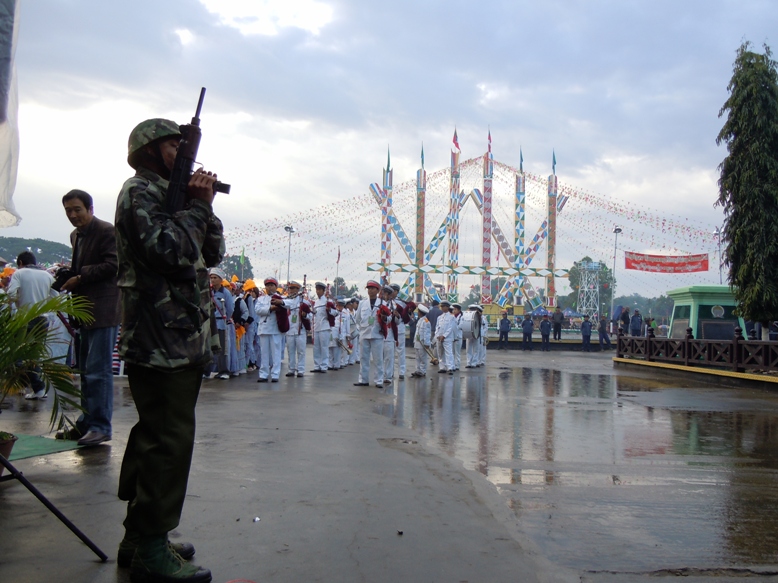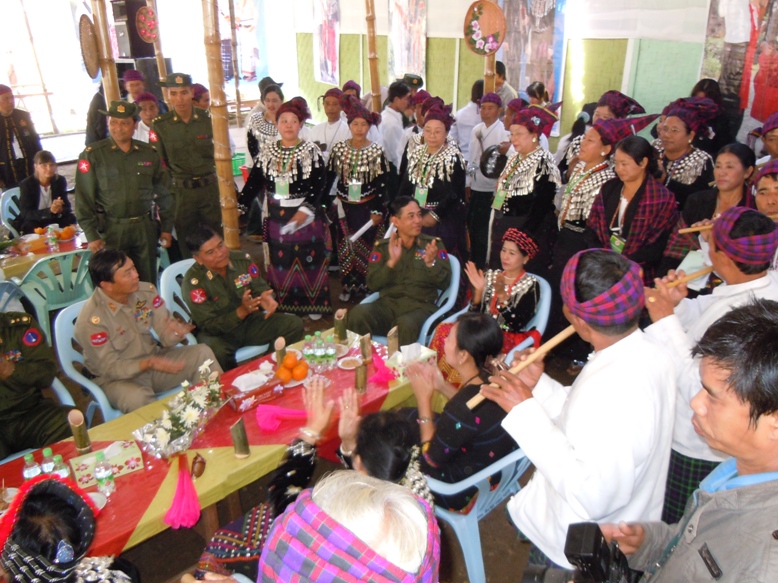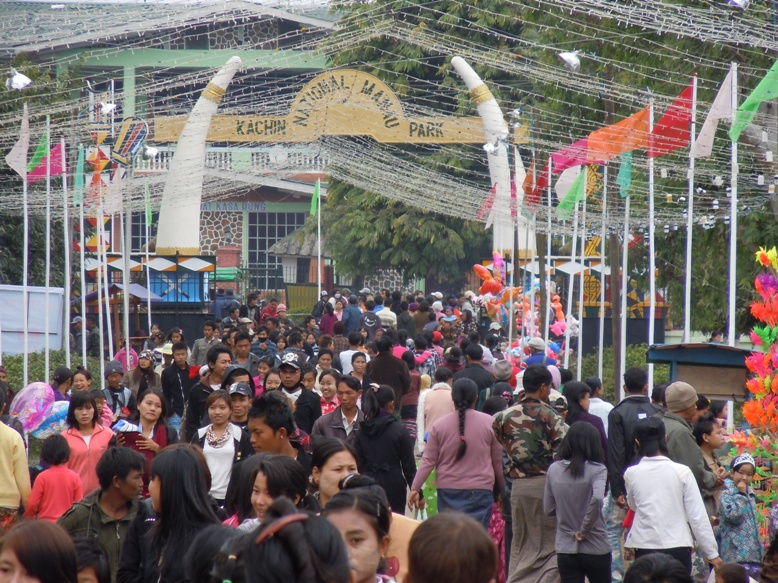A Burmese soldier stands guard at the Kachin State Day Manau Festival, Myitkyina, 10 January 2011.
The new war in northern Burma continues to intensify and, as flagged in a previous post, the Kachin Independence Army (KIA) is bringing the fight to government-controlled areas. Government buildings in Myitkyina, the Kachin State capital, were the target of recent late night bombings. Myitkyina hosts the headquarters of the Burmese Army’s Northern Command, and has become the key economic, political, strategic and cultural hub for the entire region.
Senior and junior Northern Command officers enjoying the frivolity of Kachin Manau celebrations, January 2011.
Reports on the various engagements between Kachin and Burmese troops are, naturally enough, still incomplete at this stage but the picture that is emerging is one of confident and capable KIA counter-attacks. KIA troops in the field have also, given what I understand to be some of the provocations, proven relatively restrained.
The new series of coordinated bombings in Myitkyina are likely to escalate tensions even further and will, without doubt, heap extra pressure on those Kachin civilians who are choosing to stay in the region’s main town. Some Kachin will, understandably, seek refuge elsewhere. The prospects of a quick or easy return to the 1994-2011 ceasefire agreement now appear remote.
Every indication is that with such widespread hostilities it will be a very hard road back to stability and “normality” in Kachin areas.
Crowds at the Manau in January 2011. The now abandoned Kachin Independence Organisation liaison office in Myitkyina looms in the background.
In the years to come there will be plenty of opportunity to reflect on what has occurred in the Kachin State over the past two decades and over the past two weeks.
But, for the moment, I thought it worth introducing some tentative thoughts on the prevailing situation. Events elsewhere in Burma are very relevant too. With Aung San Suu Kyi now becoming noticeably more active, and also plotting very high impact public statements, some key pieces of Burmese political life are in motion.
Mid-2011 is proving an especially interesting time for those of us who study Burmese politics. As ever, once the pieces are in motion nobody can really judge exactly where any new momentum might lead. Events in Kachin State, and these recent attacks on Myitkyina, are just part of the puzzle.
Could we now see a far more proactive effort by Burma’s democratic forces in places like Yangon and Mandalay to throw their weight behind the various ethnic struggles? Like in previous decades such a coalition would put fear in the hearts of some senior Burmese military commanders. Almost the last thing they want to see is ethnic and Burmese democratic interests coalescing to mount a battle on multiple fronts across the length and breadth of the country.
While it is far too early to suppose that something along these lines will materialise, it is certainly worth entertaining the possibility and pointing out that fluid politics can lead to abrupt, and unexpected, changes.
********
Finally, for those New Mandala readers looking for some background on the Kachin conflict these posts (from February and April 2011) provide a few additional pointers. The Irrawaddy‘s chronology also helps to set the scene.
 Facebook
Facebook  Twitter
Twitter  Soundcloud
Soundcloud  Youtube
Youtube  Rss
Rss 

